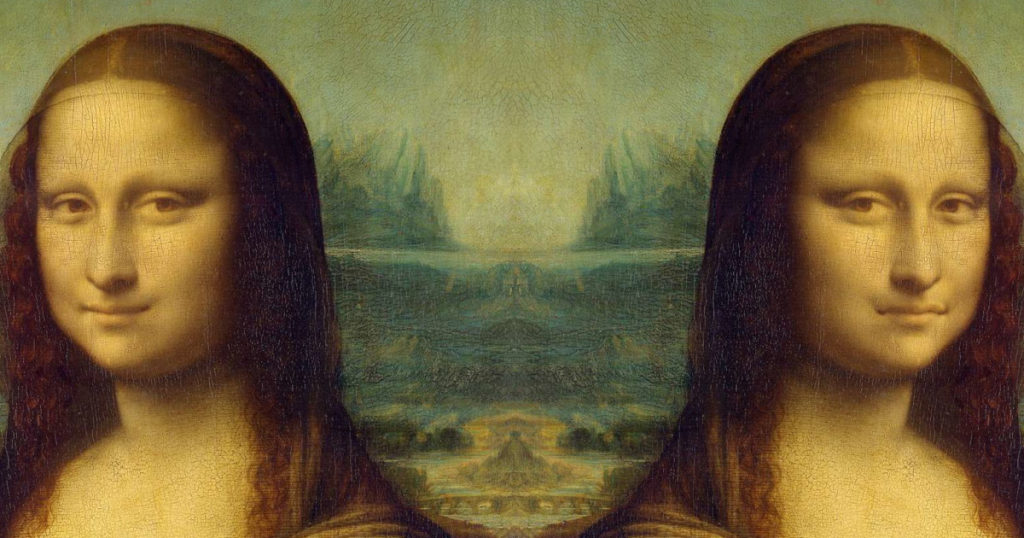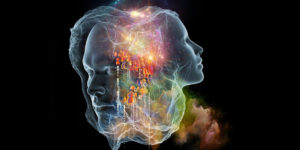What is the Mandela Effect? The 20 most famous (and shocking) examples

Year 2009. Fiona Broome, an American self-described as a paranormal consultant, relates, on her blog, that shared with other people the memory that Nelson Mandela had died in prison in 1980, with the vivid memory of having seen the funeral on television. But she herself had been surprised not only because Mandela was released from prison in 1990, but that, at the time the woman recounted this event, he was still alive, since he did not die until December 5, 2013.
Broome coined, in that blog entry, a concept that has become one of the most mysterious phenomena in the study of psychology: the Mandela effect. A phenomenon through which many people shared the same memory of something that had never happened. In this case, the death of Mandela in prison.
But soon, this term began to circulate on the network and other cases began to emerge equal or more shocking than the false collective memory that the South African activist had died. And some of these examples show us to what extent our memory can be modified to make us believe something that has never happened, having perfectly vivid memories of something false.
But, What is the Mandela effect? Why it happens? What are the most famous and shocking examples? If you want to find the answer to these and many other questions, you have come to the right place. And it is that in today's article and from the hand of the most prestigious scientific publications, we are going to immerse ourselves in the mysteries of what is surely the most amazing psychological phenomenon: the Mandela effect.
What is the Mandela effect and why does it happen?
The Mandela effect is the psychological phenomenon through which many people share the same memory of something that never happened. That is, it is a false memory that a whole group in society shares. Many people have, in their memory, a memory that, although it does not appeal to anything that happened in reality, is shared by others.
It is no secret that memories are susceptible to being modified by the plasticity of our brain. At the end of the day, memory is built on the basis of fragments linked between the perception of information, personal beliefs and imagination. All this means that not only can we not so easily discriminate the quality of a memory, that is, if it is real or fictitious, but errors can arise in the processing of memories.
Hence, phenomena such as cryptomnesia can occur, an illusory memory phenomenon that happens when a person remembers something that is stored in their memory but does not experience it as a memory, but as a new idea. This leads us to believe that we have discovered or invented something that we actually know precisely because it is already discovered or invented and we have simply remembered that we learned it.
But, at the end of the day, these are all individual failures in memory. How can it be that thousands of people share the same false memory? Why does the Mandela effect occur? Well, as we have said, it is one of the most mysterious psychological phenomena, so, of course, we do not understand its nature well.
Different theories have been postulated to explain the existence of the Mandela effect, ranging from psychological phenomena to the realms of quantum physics with the intersection between universes and parallel realities. On a psychological level, one of the most accepted explanations has to do with what is known as external memory induction.
This phenomenon is based on the premise that when we have an information gap that prevents us from connecting what we know with what we observe, our brain tries to fill this gap. But the memory, we have already said that have trouble differentiating between real and fictitious memories, it may give us induced false images, to a large extent, due to the phenomena of communication with other people.
And this is how, in the collective imagination, certain false memories spread like wildfire. This phenomenon would also be associated with the carry-over effect (how we seek social validation and believe what the majority believe just by not going against it) and the confirmation bias (how we prioritize the information that allows us to confirm our beliefs).
But let's take into consideration the psychological explanations, the follies of quantum physics that talk about how the realities of different universes could come into contact or more pseudoscientific explanations, what is clear is that the Mandela effect is a reality. And with the following examples, you are going to hallucinate.
What are the most famous cases of the Mandela Effect?
As we say, the Mandela effect was baptized as a result of the post on Fiona Broome's blog where she talked about how many people believed that Nelson Mandela had died in prison in 1980 when, in fact, in the year in which this term was coined, he was still alive. Since then, interest in this curious phenomenon has brought many more examples to light. It's impossible to rescue them all, but we've done extensive research to bring up some of the most astonishing cases.
1. Nelson Mandela: died in prison in 1980?
Although we have already mentioned it, we cannot not include it in the list. The phenomenon of the collective imagination that started it all. Many people around the world were convinced that Nelson Mandela died in prison in 1980 (and even that they saw his funeral on television), when it actually came out in 1990 and did not die until 2013.
2. The Monopoly monocle?
Think of the lord of Monopoly. How do you remember it? With a monocle, right? Well, I'm sorry to tell you that you are a victim of the Mandela effect. He has never worn a monocle.
3. The Man and the Tiananmen Tank
In 1989, during the well-known Tiananmen Square protests in China, a video of a man standing still in front of a tank to prevent it from moving was made famous. Thousands of people are convinced to see how the tank crushed the man. But this never happened.
4. The sanctification of Mother Teresa of Calcutta
Mother Teresa of Calcutta was beatified in 2003 and canonized in 2016, almost 20 years after her death in 1997. Well, many people were convinced that this had happened in the 1990s during the pontificate of John Paul II.
5. Where is New Zealand?
The Mandela effect also occurs in geography. If I asked you to mentally locate New Zealand on a map, where would you put it? Above Australia, right? Well I'm sorry. You are a victim of the Mandela effect. New Zealand has always been (I doubt they have moved it) to the bottom right of Australia.
6. Looney Toons?
By what name do you know this popular cartoon series starring, among others, Bugs Bunney? Looney Toons, right? Well, we are sorry, but that was never his name. The series has always been called Looney Tunes.
7. Curious George's tail
Curious George is the popular children's book saga and cartoon series. If I ask you to imagine the main monkey, how will you do it? With a brown tail, right? Well, the truth is that Jorge never had a tail.
8. Mirror ... Mirror?
"Mirror, mirror ... Who is the most beautiful in the kingdom?" This phrase from the Snow White movie spoken by the evil queen is one of the most famous in movie history and, amazing as it may sound, it has never existed. The queen never says "mirror, mirror" in the entire movie.
9. Mickey Mouse's suspenders
We've seen Mickey Mouse millions of times, so you sure can't get the Mandela effect, right? Let's see. Imagine Mickey Mouse. Are you wearing suspenders? Yes right? Well, you have been, again, a victim of this phenomenon. The popular mouse has never worn suspenders.
10. Luke, I am your father
"Luke I am your father". A phrase uttered by Darth Vader in The Empire Strikes Back, which represents one of the most famous script twists in the history of cinema and which, again, has never existed. Darth Vader never says "Luke, I am your father." What he actually says is "No, I am your father.".
11. We are the champions… Of the world?
One of the most famous songs not only by Queen, but in music history. How could we not know his handwriting? Well, sure if you wear to sing it, at the end you say “of the world”. Well, no study session ends like this. In some concerts they did end with this phrase, but it is a Mandela effect like the top of a pine tree.
12. The simpsons?
One of the longest-running and most popular animated series of all time, how could we not know the title? Well, many people believe that the series is called "The Simpsons", when in reality there has never been that final "s". They are "The Simpsons."
13. The coup of 23-F ... On television?
23-F was a failed coup attempt perpetrated by some military commanders in Spain on February 23, 1981. And although many Spaniards claim to have witnessed this event live on television, the truth is that these images were never broadcast on direct. It was only broadcast on the radio.
14. Tom Cruise and the sunglasses
In the movie Risky Businees, there is an iconic scene where Tom Cruise dances in his boxer shorts, socks, shirt and… sunglasses? The truth is that almost everyone remembers Cruise sliding down the hall with sunglasses, but he does not wear them at any time.
15. The thinker's hand
"The Thinker", the work of Auguste Rodin, is one of the most famous sculptures in the world. But where does the thinking person hold their hand? Leaning on the forehead, right? Well no. He has it on his chin.
16. Play it again, Sam
Another of the most famous phrases in cinema that, surprisingly, never existed. Nobody says this phrase in the Casablanca film. Ingrid Bergman, in her role as Ilsa, says to the pianist, "Play her once" and "Play her, Sam." But never the phrase for which the film is remembered.
17. Pikachu's tail
If you are a Pokémon fan, Pikachu has been part of your childhood. But we are going to put you to the test. Pikachu's tail has a black part at the end, right? Well no. All his tail is yellow.
18. JFK's car
On November 22, 1963, John F. Kennedy, the thirty-fifth president of the United States, was assassinated while riding in the presidential car in Dealey Square. And in this car, how many rows of seats were there? Two, like in any car, right? Well no. There were three rows of seats. You can check it yourself.
19. Kit-kat?
This chocolate snack is one of the most popular. And if I asked you to write it down, how would you put it? Kit-Kat, right? Well you would be wrong. He has never carried this script. It is simply KitKat.
20. C3PO's leg
C3PO is one of the most iconic characters in the Star Wars universe. And if I ask you to imagine it, how will you do it? Seeing a robot with a golden body, right? Well you would be wrong. The truth is C3PO has always had a silver colored leg.




Leave a Reply